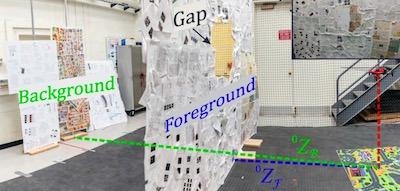Sat, Sep 15, 2018
University Of Maryland Scientists Working On Project GapFlyt
Researchers at the University of Maryland are teaching drones to employ techniques used by birds and insects to fly through narrow gaps at high speeds. The drone, a Bebop 2 drone with an NVIDIA Jetson TX2 GPU on board, has been able to fly through a small hole at about 6 feet per second with about an 85 percent success rate.

The program is called GapFlyt by the UM researchers. TechCrunch reports that the drone utilizes a monocular camera that allows the aircraft to develop a 3D model of a surface from a series of photographs. The drone can assess the size and depth of holes and find a safe path through the gap.
Spectrum IEEE reports that the drone captures a series of images and identifies similar features in each image. Features behind the gap will appear to move less than those that are closer, and the drone identifies where that difference is the greatest. Then, it flies through the gap.
A process called visual servoing provides feedback to control the motion. The drone flies around the target area, and adjusts its movement to be sure its position relative to the gap is consistent. The paper published by the UMD researchers equates the process to that of a bee looking for a gap through which it wishes to fly.
According to the researchers, they achieved a success rate of 85 percent "over 150 trials for different arbitrary shaped windows under a wide range of conditions which includes a window with a minimum tolerance of just 5 cm."
"We present a minimalist philosophy to mimic insect behaviour to solve complex problems with minimal sensing and active movement to simplify the problem in hand. This philosophy was used to develop a method to find an unknown gap and fly through it using only a monocular camera and onboard sensing," the paper says in its conclusion. "As a parting thought, IMU data can be coupled with the monocular camera to get a scale of the window and plan for aggressive maneuvers."
(Sources as cited. Image from University of Maryland)
More News
Aero Linx: Model Aeronautical Association of Australia MAAA clubs are about fun flying, camaraderie and community. For over 75 years, the MAAA has been Australia’s largest fl>[...]
Touchdown Zone Lighting Two rows of transverse light bars located symmetrically about the runway centerline normally at 100 foot intervals. The basic system extends 3,000 feet alon>[...]
“Discovery and innovation are central to our mission at Virgin Galactic. We’re excited to build on our successful record of facilitating scientific experiments in subor>[...]
How To Get A Story On Aero-TV News/Feature Programming How do I submit a story idea or lead to Aero-TV? If you would like to submit a story idea or lead, please contact Jim Campbel>[...]
Student Pilot Reported That During Rotation, “All Of A Sudden The Back Of The Plane Kicked To The Right..." Analysis: The student pilot reported that during rotation, “>[...]
 ANN's Daily Aero-Linx (05.02.24)
ANN's Daily Aero-Linx (05.02.24) ANN's Daily Aero-Term (05.02.24): Touchdown Zone Lighting
ANN's Daily Aero-Term (05.02.24): Touchdown Zone Lighting Aero-News: Quote of the Day (05.02.24)
Aero-News: Quote of the Day (05.02.24) ANN FAQ: Contributing To Aero-TV
ANN FAQ: Contributing To Aero-TV NTSB Final Report: Cirrus Design Corp SR20
NTSB Final Report: Cirrus Design Corp SR20



